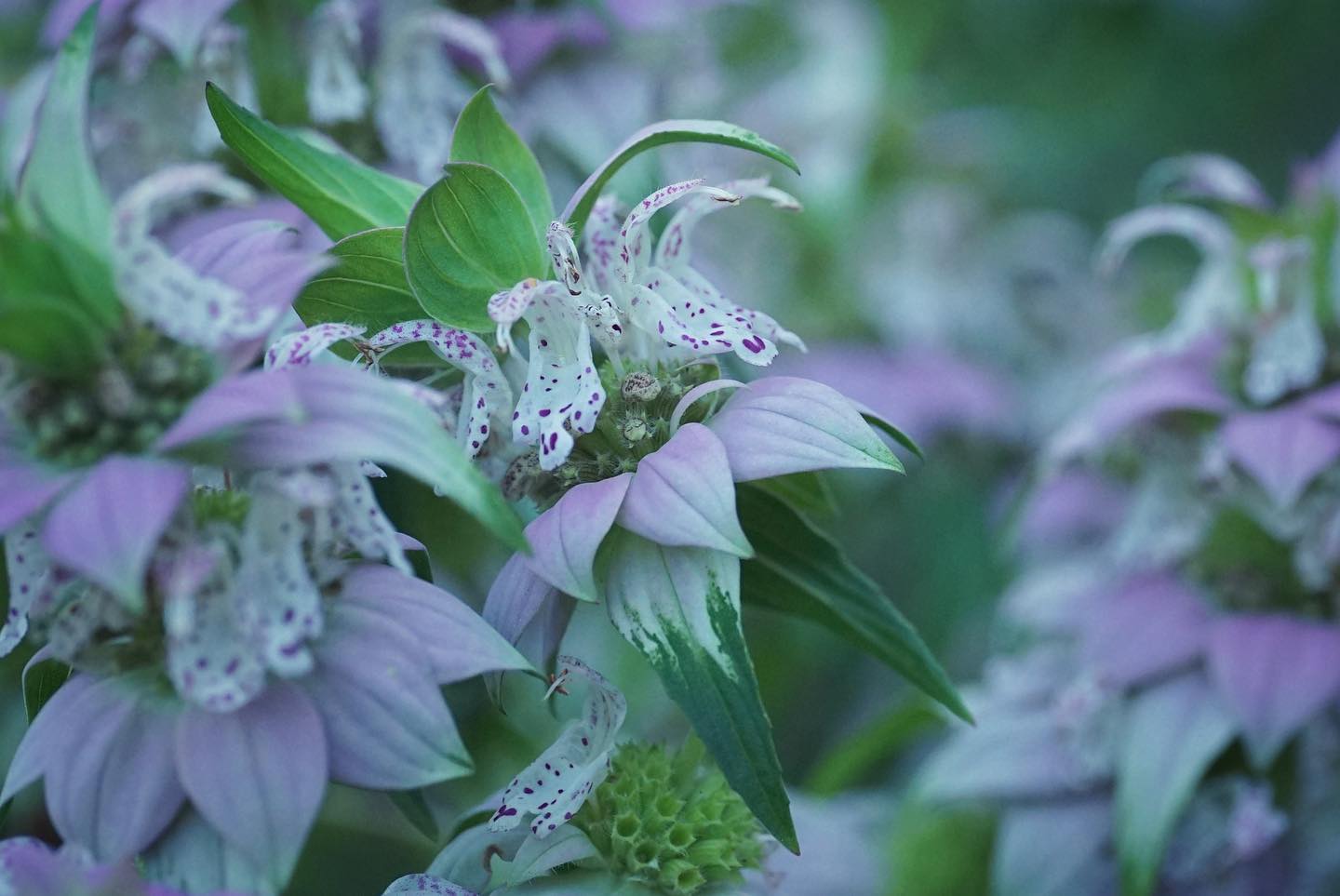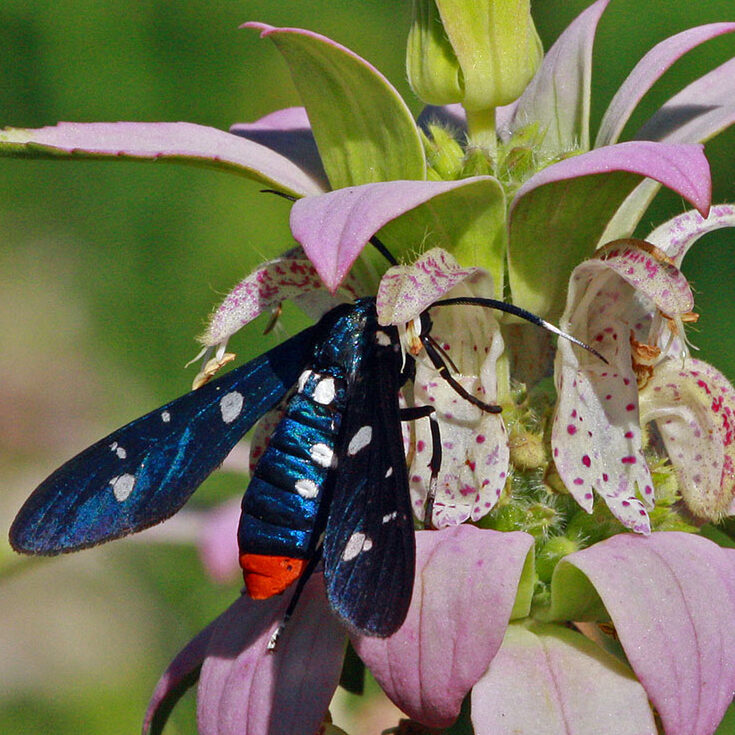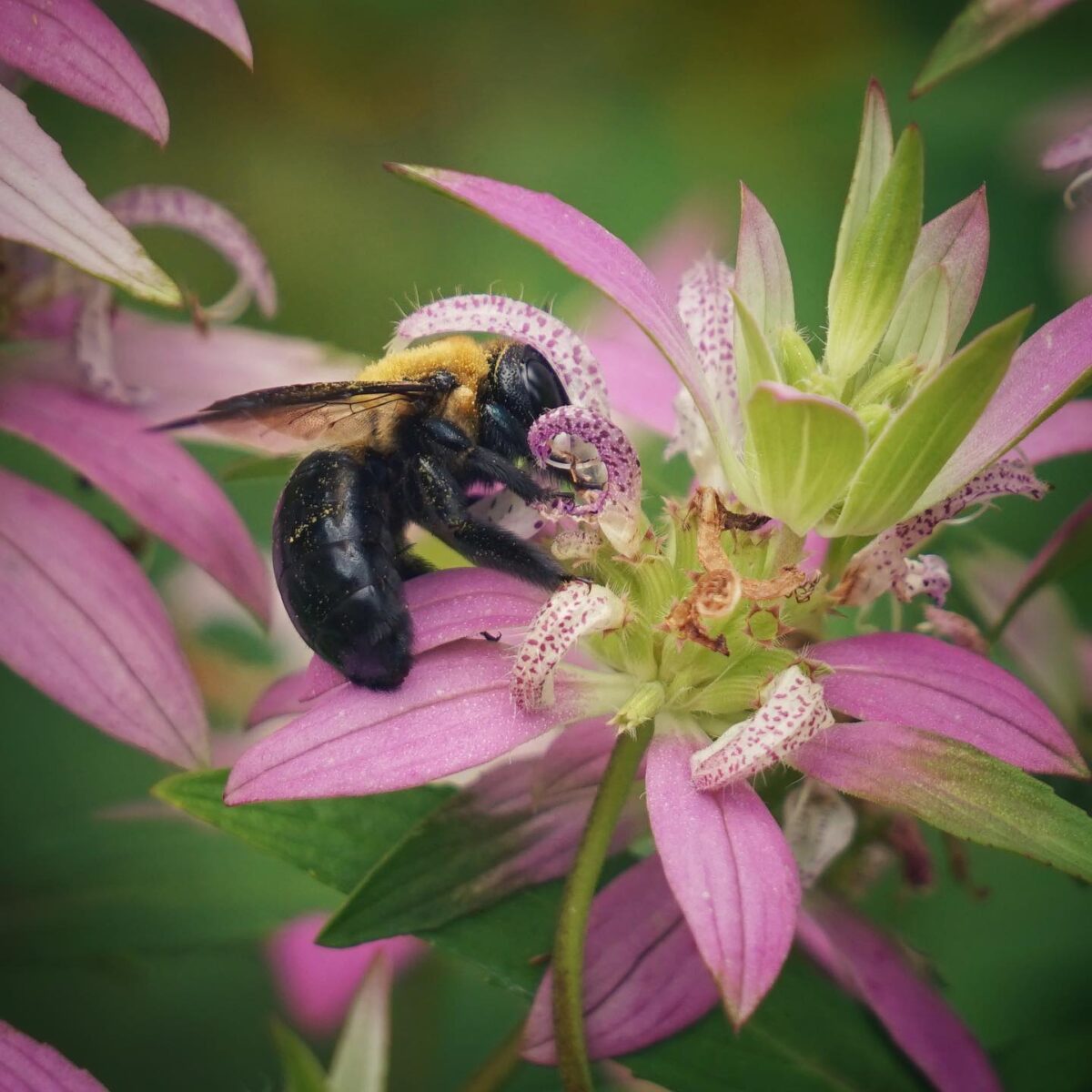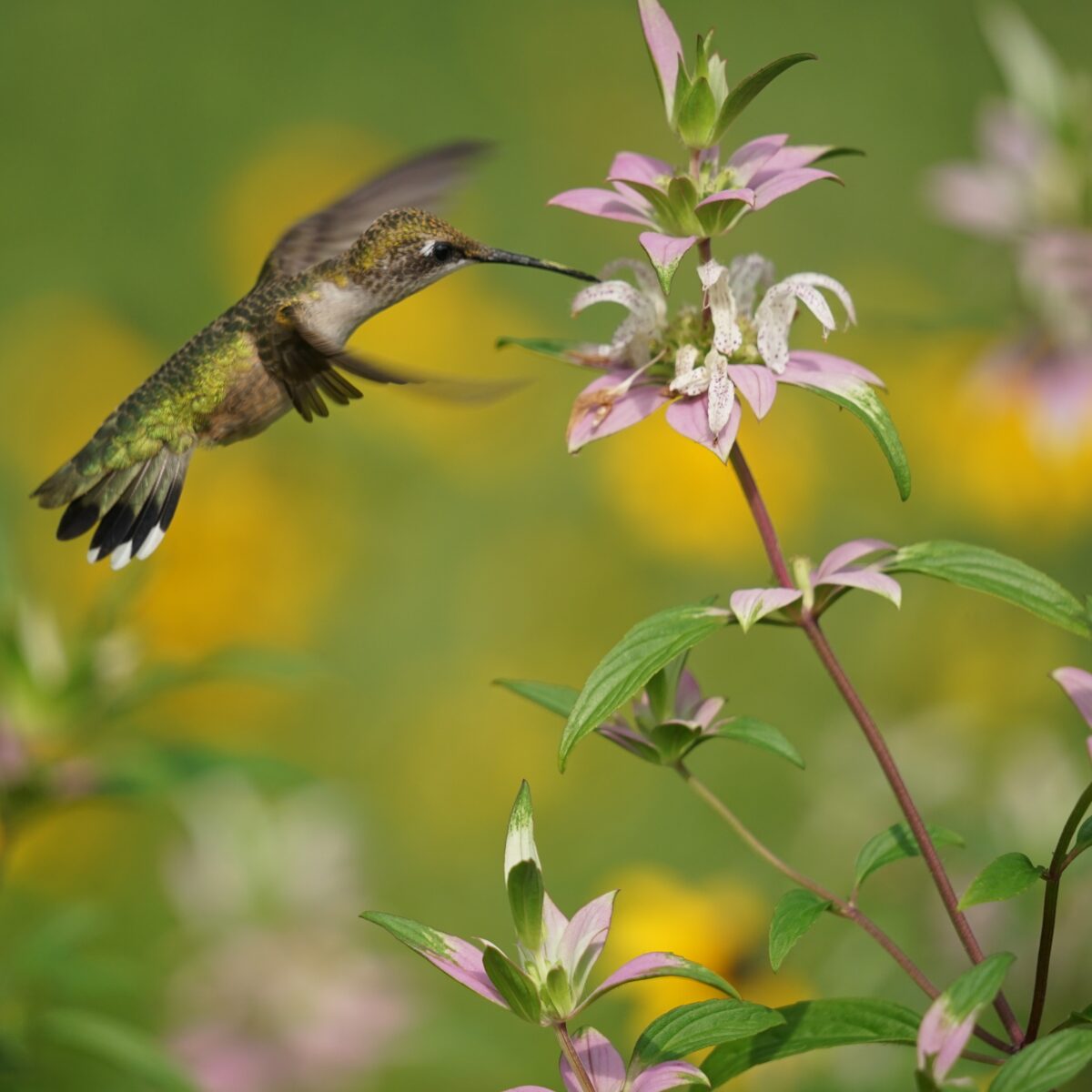Spotted beebalm
Pictured above: Spotted beebalm (Monarda punctata) by Emily Bell. Click on terms for botanical definitions. View post as a PDF.
Spotted beebalm (Monarda punctata) (also known as Dotted horsemint) is a robust, aromatic wildflower that occurs naturally along roadsides and in meadows, pinelands, and disturbed sites. It typically blooms late spring through fall, attracting a huge variety of pollinating insects, including bees, wasps and butterflies. In winter, it dies back to the ground (in South Florida, to a basal rosette).
Its flowers are inconspicuous, hairy and whitish-yellow with purplish spots (punctate). Often mistaken for petals are its showy, leaflike bracts that subtend its tiny flowers. Bracts vary in color from pink to lavender or purple and often have yellowish-green tips and undersides. Flowers are born in elongated spikes and arranged in whorls. Leaves are petiolate and pubescent with toothed margins. They are oppositely arranged. Stems are pubescent, erect and square, like most members of the mint family. Seeds are born in nutlets at the base of each flower.
Spotted beebalm is high in thymol, which has antimicrobial, antifungal and antiseptic properties and was used historically to treat ringworm and hookworm infections. When crushed, the leaves emit an oregano-like scent. The leaves and flowers can be brewed into a mild tea that is said to promote relaxation. For more information on Spotted beebalm’s medicinal properties, check out this profile from Green Dean.
Family: Lamiaceae (Mint family)
Native range: Nearly throughout
To see where natural populations of Spotted beebalm have been vouchered, visit florida.plantatlas.usf.edu.
Life span: Perennial
Soil: Dry to moist, well-drained soils
Exposure: Full sun to partial shade
Growth habit: 2–4’ tall
Propagation: Seed
Florida regions of landscape suitability: North, Central, South
Garden tips: Spotted beebalm has a long bloom time and can be a nice addition to a home landscape. Enjoy the diversity of pollinators it attracts. If not maintained, it can quickly outcompete other wildflowers. Cut back before seed sets or allow room for reseeding.
Seeds are available through the Florida Wildflowers Growers Cooperative. Plants are available at nurseries that specialize in native plants. Visit PlantRealFlorida.org to find a native nursery in your area.
For more information on this species, check out this profile from 20 Easy-to-Grow Wildflowers.
Learn more about Spotted beebalm from the Florida Native Plant Society and the Institute for Regional Conservation.




